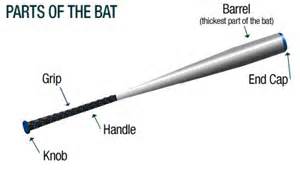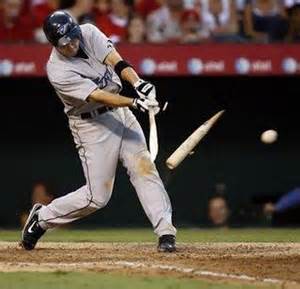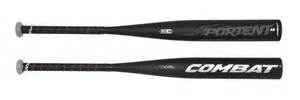Baseball Bat Size Chart
Selecting a Proper Youth Bat - Baseball Bat Size Chart
The most important
choice your player will make prior to the season starting could be what bat to
use. In addition to performance considerations, bat cost can range from $20 to
+$300, therefore knowing your price range going in is very important so you can
compare apples to apples and not apples to oranges
Here is the Rule of Thumb when choosing a baseball bat:

Parts of an Aluminum Bat
Baseball Bat Size Chart
A player should swing the
heaviest bat he possibly can without sacrificing
any of his bat speed. Why? Because bat speed is the single biggest
contributor to power when hitting the ball. Makes sense the heavier the bat
moving at the same velocity as a lighter bat, will create much more power.
There are three major
standards that apply to every baseball bat:
1. Length, which is measured in inches;
2. The second standard is weight, which is measured in ounces;
3. The last thing to look for is “drop.” Drop id figured by subtracting the weight of the bat from the length. In other words a bat which is 31” in length and weighs 23 ounces, equals a drop of “Minus Eight” drop, 8 ounces less than the bat length in inches.

Yes, Wood Bats Do Break
Baseball Bat Size Chart
Should I buy Wood or Aluminum?
I won’t get into the pros and cons of wood vs aluminum as that’s an entirely different and huge discussion. So we’ll only discuss aluminum as wood bats are nearly non-existent in today’s little league play and there are reasons for that. A wooden bat cannot contend with aluminum as far as weight, wood is always being heavier. Therefore a player cannot generate the same bat speed with a wood bat as aluminum or composite.
Less bat speed, less power, less distance. Young players need to use aluminum bats, and some associations require them.
What do numbers like CU-31… CU666…SC-900… ST+20 Mean?
These are industry designations which identify the % and name of alloy used to construct the bat. The more expensive the bat … the more speed it comes off the bat, achieving a greater distance. This “new age” method probably is a take-off from the golf industry with golf clubs attaining greater distance.
One Caveat. Composite/aluminum bats, regardless of cost, have a limited amount of “Good Hits” in them before the bat becomes dead, and virtually useless. Avoid hitting in cold weather and never hit anything but a regulation baseball.

Steps in Sizing a Bat Purchase:
The first thing to decide is what is the proper length, then weight and drop come into play. I could dazzle you with mathematical equations to arrive at the proper bat size, but I’m too lazy for that.
Basic test. Have the player grip the bat by the handle, at the knob, and hold the bat straight out in front of himself. If he cannot hold the bat straight out for a normal count of 10, the bat is too heavy. If it is a strain for him to keep it straight out for a 10 count but does, I suggest to drop down a size.
I know, the player will
probably grow into the bat, or he might get 2 seasons out of it instead of one.
But I have encouraged players to drop 2 ounces of weight, no other changes,
which made huge differences in their swings and performance. Just something to
consider.
Below is a general chart which
contains suggested bat lengths and weights. I cannot
stress this strong enough. This is a guideline only! Realize some players like
to choke up on the bat, which means they might buy a longer bat than the guide
calls for, and some kids are simply stronger than others, and can handle a
larger bat.

Baseball Bat Size Chart to Teaching Hitting

New! Comments
Have your say about what you just read! Leave me a comment in the box below.